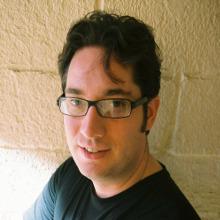Speech to Laser to Sound
(Inside Science) -- Noise. Our world is full of it, from a feisty family dinner to the bustling sounds of the big city. There are a million stories in the city, and every car horn, bus engine, child's cry, dog bark or construction site jackhammer tells a story -- to anyone who can hear and is willing to listen. To people who are hard of hearing, the rich audio tapestry of urban life can be more of a barrier -- a bombarding barrage of babble that drowns out the sounds they actually want to hear. Now scientists hope high tech lasers will one day alleviate this decibel dilemma.
Hearing loss is one of the most common sensory deficits in people worldwide, and one of the main ways to help those who are hearing impaired is through devices -- hearing aids. They pick up mechanical sound waves and amplify them directly into the ear or indirectly through the skull, by vibrating the bones around the ear and conducting the sound.
Many people with hearing loss are not sufficiently served by modern hearing aids, however, which is why some scientists are seeking new laser technologies to complement traditional hearing aids.
"Our big step was to code acoustic frequencies using one color laser," said Gentiana Wenzel from the Saarland University Medical Center in Hamburg, Germany.
Wenzel is testing a new idea, a device that uses a laser to encode sound in the form of light pulses and then transmit them onto tissues in the ear, which absorb the light and vibrate, inducing sound waves.
"So if we applied, we applied the pulses on the eardrum, then the eardrum starts vibrating. So, we envision a hearing device that has a light source and the pulses are directly, directly to the eardrum without having there any other devices. Or to insert fiber into the middle ear and eradicate the little ossicles that transmit the sounds to the inner ear or eradicate directly on the inner ear," said Wenzel.
Wenzel’s research, which is still in the early, "basic science" stages, shows that the mechanical or electrical energy created by traditional hearing aids can work with a laser based device.
"And if we use the light with certain perimeters, then we are in an area of the laser tissue interaction that induces the transformation of mechanical energy, of optical energy and mechanical energy. This is called optoacoustics. This mechanical energy resulting from this process, you will then use to activate the hearing organ," said Wenzel.
There is no prototype hearing aid yet. But Wenzel’s team has made a big step. They custom-built a green laser that encodes the range of acoustic frequencies relevant to human speech using one color laser light.
"But for coding speech and music, you need the complete frequency spectrum. And the part of my, or the main topic of my group is to find a way to use one color laser and code the different frequencies that are needed for the coding speech and complex sounds like music," said Wenzel.
When she started the work, Wenzel realized she needed a laser that was far less powerful than the industrial ones use to cut metal and other materials and far more powerful than existing low-level medical lasers. She needed a custom-built laser that was just right.
"I had to look for a company that was building lasers on demand, and they worked with us and built us the first laser, but the laser that we worked now for the basic part of our study was this size, and we need to go in smaller," said Wenzel.
Wenzel’s team will keep working to match light to more sound frequencies in order to develop a device that can accurately encode not just the entire spectrum of a human voice but also complex sounds like music.
Down the road, they want to examine how safe and effective such a laser will be in the body, how to shrink it into a miniaturized device, how to power it and how much such a device would cost.
"There has to be a device first, and then we will look for the cost afterwards. We need something that improves the hearing for patients and this we will do. Then further down the road we will look for what the costs will create," concluded Wenzel.

